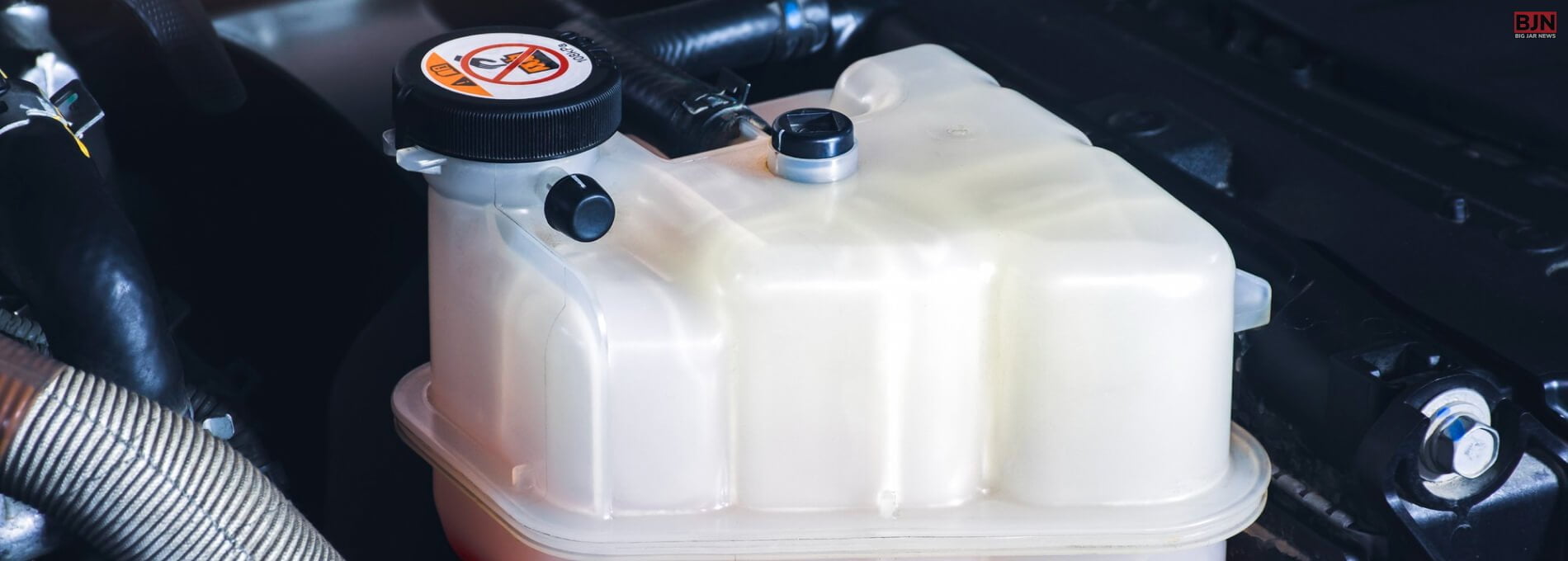What Is A Coolant Reservoir? How Does It Work?

Table Of Contents
A coolant reservoir tank is used to regulate the amount of coolant that expands. This expansion is because of the excess heat that your vehicle’s engine produces. As your engine produces more heat, the amount of coolant also expands as a result. This results in the overflow of the coolant in the coolant reservoir. The radiator reservoir sucks back the excess coolant, after your vehicle cools down after you shut it off.
Coolant Reservoirs: All That You Need To Know!
Basically, your vehicle sucks the excess coolant with the help of the coolant tank, and every time your vehicle heats up, it produces the excess coolant. Furthermore, if your coolant overflow tank gets a leak or a crack, it will constantly replenish itself, and your engine will become overheated.
In this article, you will get an idea about the working of a coolant reservoir and how a coolant gets into the overflow tank. If you read through to the end of the article, you will understand the entire system and the uses of a coolant reservoir tank.
What Is A Coolant And What Does It Do?

Cooling systems are used in cars and other vehicles to keep the engines of the vehicle from overheating. When the engine of the vehicle overheats, it produces a fluid containing a mixture of water and antifreeze. This mixture is known as coolant. This coolant absorbs the excess heat from the engine and tries to cool it down.
Where Does Coolant Go After Absorbing The Heat?
After the coolant, containing the mixture of water and antifreeze absorbs the heat from the engine, and then the engine pumps it to the radiator. Here, a fan is used to remove the excess heat present in the coolant. The heat goes out from the vent. As the coolant cools down again, it prepares itself for the next cycle to absorb the further heat of the engine.
Radiator Overflow Tank: All That You Need To Know!
As the coolant circulates between the engine and the radiator continuously to remove the excess heat of the engine, constant heating and cooling occurs for the coolant. As the coolant absorbs the heat from the engine, it expands as a result. Hence, the expanded coolant goes into the coolant reservoir or coolant expansion tank. In some cases, some people also call it as the radiator overflow tank or the recovery tank.
As the heat releases through the vent with the help of the fan in the radiator, the coolant cools down. After cooling down, the coolant contracts again. After that, it leaves the coolant reservoir to return to the engine again. This circle happens every time until the engine shuts down or cools down.
If there is no reservoir in your cooling system, the amount of coolant you must add to the engine, must be less in comparison. Hence, the cooling system will create a deficit in keeping the engine cool. Furthermore, if an engine gets too hot, it will not last as much as you expect it to. Therefore, you will need to primarily ensure that your vehicle has an efficient cooling system in place. This will keep your engine safe.
How To Put Coolant In Car In Ten Simple Steps?

If you want the cooling system of your vehicle to function at its optimum level whenever the engine heats up, it is crucial for you to know how to put a coolant in your car. Although it is a simple task, any mistake can cost you your engine. Hence, you will need to be careful while adding coolant to your car engine.
The following are the steps that you need to follow carefully as you are adding coolant inside your car:
Step 1: Make sure that you turn off your car and cool down your engine. The best option for you would be to wait for at least 30 minutes after you use your vehicle.
Step 2: Open the engine area of your car, and find out the coolant reservoir or radiator. You will see a white container with a black lid. You should connect this container to the radiator with the use of hoses. Also, You will see filling measurements marked on the sides of the white container.
Step 3: To insert the coolant, you will need to remove the coolant cap or the radiator. In new cars, you will also see labels on the lid of the radiator. Ensure that the coolant cap is fully cool before you insert the coolant.
Step 4: If there is an old coolant present in the coolant reservoir, you should drain it. Old coolant seldom contaminates, and the ratio of water and antifreeze also alters and changes. Check out YouTube about how to remove old coolant.
Step 5: Make the coolant mixture. If you are not confident about this, you can buy it in your nearest automobile shop.
Step 6: Insert the coolant in the coolant tank in the engine. Make sure the coolant reaches up to a few inches below the place where the Maximum mark is given in the coolant reservoir.
Step 7: Check whether your radiator and thermostat perform properly. The best option would be to replace them as you are replacing your coolant. This will ensure better performance.
Step 8: Check whether your engine is getting overheated or not. Start your engine after closing the hood. Until the temperature gauge reaches normal, let the engine run. Drive for 30 minutes nearby to see whether your engine gets heated up or not.
Step 9: After your drive, inspect the coolant level again. Carefully check the level of coolant in the reservoir.
Step 10: Check whether the coolant reservoir has leaks or damage on its body. If the reservoir has leaks, you will need to change it for the safety of your engine.
Summing Up
Hope you found this article helpful in understanding how a coolant reservoir works and how you must insert coolant in your car. Checking the level of coolant is essential for you to ensure your engine’s safety. Furthermore, you should also check whether there are leaks and damages in the reservoir or not.
Read More:

























